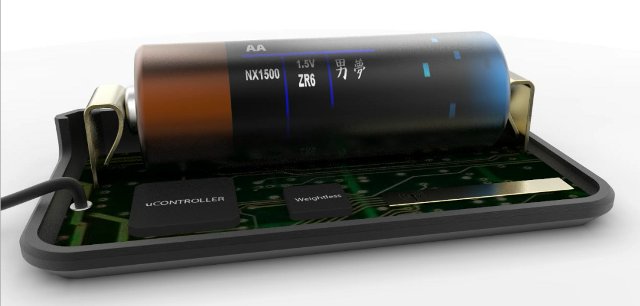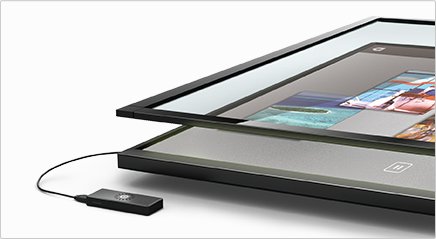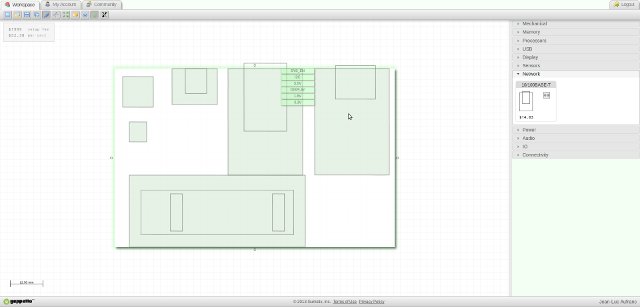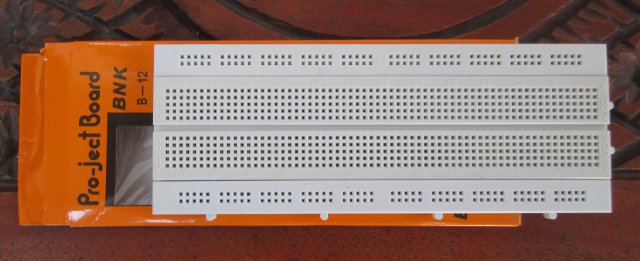Since I’ve been asked, I’ve done a short video showing how to open an Android mini PC, namely Droid Stick A2. As most casings are based on similar design the same method can be used for many other mini PCs that comes with a plastic casing. Some other mini PCs with a metallic casing, such as Hi802, need to be opened with a different, and IMHO easier, method as you just have to remove 2 screws. For Droid Stick A2, all you need is a flat head precision screwdriver. First look for small spaces between the two parts of the casing, insert the screwdriver where the largest space is, and gently lift it up. Watch the video below for a demo.
Weightless Overview and Neul Iceni, The First Weightless Chip
The Weightless Special Interest Group (SIG) has recently announced the world’s first transceiver chip using the Weightless Specification and operating over white space spectrum. Neul Iceni chipset makes use of the entire TV white space spectrum to provide low power connectivity for M2M and IoT applications using the Weightless Standard. Weightless Standard Overview Since this is the first time I write about the Weightless standard, let’s see what it is and what will be used for. There has been a lot of talk about the Internet of Things (IoT) and machine to machine communication (M2M), but one of the limiting factor is currently the cost of technology (and networks?) to provide communication. That is where “white space” spectrum comes into play. A large spectrum was used by analog TV channels, and since many countries have now switched to digital TV, part of this spectrum is unallocated (hence the name “white […]
PQ Labs iStick A200 Android mini PC Connects to G4 Series Multi-Touch Screens
PQ Labs iStick A200 is a Rockchip RK3066 Android 4.1.1 mini PC with 2 GB RAM, 4 GB Flash, an HDMI (female) output, a USB 2.0 Host port, and a miniUSB port for power. Pretty boring stuff if you ask me… And I would not be writing about it, if the company hadn’t interfaced their infrared touch frames to this mini PC to allow 10-point multi-touch on a large screen or projector output, making it a pretty good solution for conferences and interactive digital signage. Before going further, let’s have a look at the details of specifications for the iStick A200: SoC – ARM Cortex A9 Dual Core @ 1.6Ghz with HyperSpeed (Equivalent to 2.0Ghz Dual Core) and Quad Core Mali400 GPU (cnxsoft: It has to be Rockchip RK3066) System Memory – 2 GB DRAM chipset Storage – 4 GB NAND flash + microSD socket (Up to 32 GB) Video […]
ARM big.LITTLE Processing Demo (HMP) on ARM TC2 Test Chip
Samsung launched Exynos 5 Octa at CES 2013. This processor comes with 8 cores: 4 Cortex A15 cores and 4 Cortex A7 cores, and it’s the first processor that’s been announced to work in big.LITTLE configuration, where the big cores (A15) handle demanding tasks, and the LITTLE cores (A7) handle simpler tasks such as audio playback or background tasks. This is all done to optimize power consumption. There are 2 big.LITTLE software implementations: In-kernel switcher (IKS) and heterogeneous multi-processing (HMP). The first one is easier to implements but can only use 4 cores (in Exynos 5 Octa) at a time, and the second is more complex, but can handle all 8 cores, and assign individual tasks to a particular core. For more technical details about big.LITTLE implementations, you can read my previous post. ARM and Samsung recently uploaded a video providing an overview of big.LITTLE (but instead of IKS and […]
Gumstix Introduces Geppetto Web Platform to Design Custom Embedded Boards
Gumstix, the company behind the Overo computers-on-module (COMs), has recently announced an online platform called Geppetto that allows anybody with a proper web browser (e.g. Chrome or Firefox) to design and order a complete baseboard for the Overo COMs. You don’t need to know anything about schematics, PCB layout, or other lecrtical engineering knowledges. The program lets you set the board size, add modules (e.g. USB, HDMI, Ethernet…) as you wish, tells you which connections are required, and once the board is done, you can see your 3D rendered board. You can then save it to the cloud with an option to share it with the community, and you can just order it. The learning curve is very short, and once you know how to use it, it probably takes around 10 minutes to design a complete board. Your fearless CNXSoft had to give it a try… First, point your […]
Electronics Shop in Thailand – What Will $33 Buy?
Since I was in urgent need for a 5V/3A power adapter, I decided to go shopping locally (in Chiang Mai, Thailand) at some computer shopping malls, where they also have some spare parts. We spent about 1h30 visiting around 10 shops with no success: most of them did not have 5V power supply for sale, and those who did, could only provide 5V/2A power adapters. Finally, one guy at a shop was very helpful, and tried to help us without success, but finally he said you should go to “Amorn“, and after driving a few kilometers we got there. When I entered the shop I started to see some pretty interesting equipments: multi-meters, full sized oscilloscopes from 11,000 Bath (~370 USD), electronics cards for appliances (ventilators washing machine, car audio, amplifiers…), soldering irons, ribbon cables, components (capacitors, but no resistors), and much more. It turns out “Amorn Electronics Center” has […]
Open ARM GPU Drivers FOSDEM 2013 Video and Call to ARM Management
As I previously wrote, FOSDEM organizers are slowly uploading FOSDEM 2013 videos. One of the most interesting talk “Open ARM GPU Drivers” is now available. I’ve also uploaded it to YouTube (embedded below) to give it more exposure. Luc Verhaegen has also written a recent blog post entitled “Hey ARM!” where he announces the release of the modified source for Quake 3 Arena demo, and asks ARM to join them in making an open source driver. Open ARM GPU Drivers @ FOSDEM2013 This session covers the following key points: Problem – Binary drivers are mainly designed to run in Android, and it’s very difficult to have proper GPU drivers for Linux, and companies are not interested to release open source drivers or even just documentation, as they are not convinced it will benefit them in any way. Legal – This is actually the main issue, as open sourcing existing driver […]
Developer Community for Freescale i.MX6 HDMI Dongles
Last week, I explained how to build U-boot, the kernel, and Android for Freescale i.MX6 HDMI dongle reference platform. Since them, there has been a bit more activity, with Richtechie releasing source code to some ARMTvTech members. However, this source code is very similar to the one released by Freescale, and misses some part present in the kernel config on GK802 such as CONFIG_MACH_MX6Q_RICHTECHIE, and the company clearly does not comply with the GPL. Let’s forget that for now, as Jasbir (who is also behind the Hackberry board) has managed to build and boot the kernel on his mini PC. There’s still more work to do, but at least we have a based to work on. In the meantime, I’ve noticed rz2k, an other developer, was also giving it a try on #arm-netbook Freenode IRC channel, so we decided to setup a few things to facilitate development and communication between developers. […]










